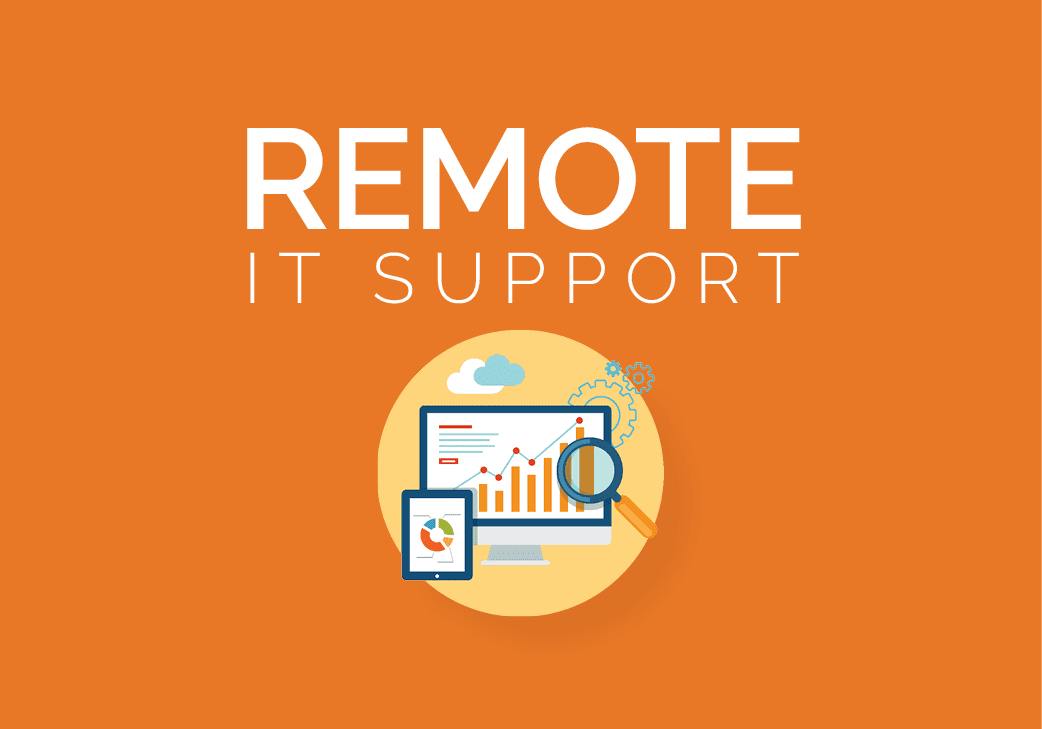
The idea of information technology support anytime, anywhere is now so common, many companies are unable to function without it. The number of employees who are teleworking or working remotely is rapidly growing. According to Global Workplace Analytics, the number of employees who work offsite has grown 103 percent in the past decade, with a 6.5 percent increase in the past year alone. This represents the largest year over year increase since before the recession. With so many employees scattered in satellites and home offices across the globe, the need for IT support to engage with them remotely is mounting just as fast.
End users, no matter where they are working, require immediate support to keep business going. Endpoints still require constant troubleshooting and servers must have needed security patches around the clock, all over the world. Since the first text-based computer, remote access was a concept, even if it was only a command line. Evolving operating systems with complex graphical interfaces are now the business standard. While working either at the office or offsite, a system can always go down. That is why a remote control support system is a necessary tool of the helpdesk and integral to business continuity.
Resolving tickets on the helpdesk quickly and efficiently, without interrupting either the support professional or end user, is crucial to meeting service levels and maintaining a good relationship with your workforce. Remember—IT should be anytime, anywhere.Tools of the Trade
Helping a user is not just about maintaining professional quality on the other end of the phone. It’s about the quality of the toolset being used. The tools used to support users who are working remotely, as well as users within the realm of your corporate network, are often different. Helpdesks are using custom-reduced security remote control tools for internal support, and corporate security enhanced software for remote users.
Remote control IT support tools often function as system applications. They often need many powerful permissions. They allow the helpdesk or IT support staff to troubleshoot problems with offsite workers’ devices by taking control of their screens remotely while interacting with the end user.
Sometimes internal customers require physical appliances to broker connections from the internet to an IT support worker’s screen. These often come with a yearly maintenance cost, not to mention the power to run the appliance 24/7. Today, remote control IT support tools are being made to work without the added expense of a physical appliance. For instance, a remote control tool that needs only a modern HTML5 web browser and a “dissolvable” code to take remote control of end-user Windows PCs and laptops located anywhere in the world then vanish without a trace. Multi-point remote control IT support tools allow the help desk to remote control any systems in the organization from any browser, without the need to deploy a remote control client or appliance.Remote control IT support tools are not just important, they’re necessary. But in order for these tools to be effective, the end user has to be able to access them securely. The proper tool must be able to support users wherever they are. Keep in mind the helpdesk has limited time to use multiple tools. The more tools that are being used, the more likely the company and the end user will run the risk of connection issues, software updates interrupting service, and an extremely high cost of running multiple tools at the same time. Would you buy two different antiviruses to keep your PC safe? No – the right one is all you need.
When considering a remote control IT support tool for your offsite end users, check for added features that will make the tool more efficient such as chat and file transfer.What about security?
Cyber attackers can exploit remote access tools to compromise a company’s data. When remote control IT support tools are at risk, malicious apps could abuse the remote support functionality to take data, download viruses and open the door to more risk for the company through the connection. The number one target of cyber criminals is unpatched vulnerabilities in apps and the operating system.
IT security teams can protect remote systems with detection and remediation. As with devices at the office, offsite workers need to be educated about what sources are trusted, and to engage the helpdesk when installing any application or downloading any program. To protect the device and ultimately the systems it connects to for work, the proper patches must be kept up to date.
If there has been a possible breech, it’s important to mitigate the problem as quickly as possible. With some remote control IT support tools, IT security can view recorded remote activity for full security auditing purposes.
With so many employees working remotely in town or across the globe, IT helpdesks and support staff also have more tools to serve them and protect the enterprise securely than ever. Remote control support systems are a necessary tool to manage these remote employees’ connectivity and integral to keeping business going. As security and multi-point remote control tools evolve, IT support staff will accomplish their goals of serving employees everywhere safely and efficiently for the company.
Read the full article on tmcnet.com.







